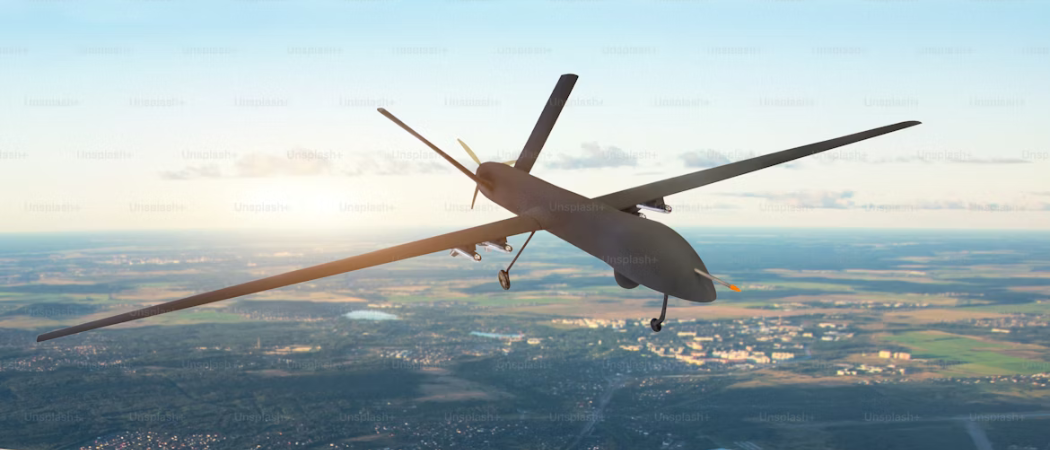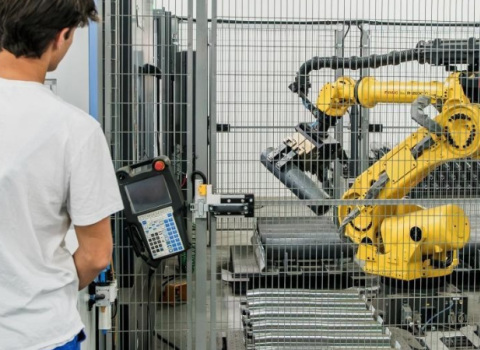The European Commission’s new defence readiness roadmap talks up the importance of innovation, but is short on details

Photo credits: Unsplash
The European Commission has announced that it will present a European defence transformation roadmap in November, including “new ways to boost innovation with the defence industry,” and address the need for “greater agility, speed and risk-taking.”
Innovation is a “critical component of Europe’s defence readiness,” it writes in its 2030 defence readiness roadmap, published on October 16. “Technological innovation and iteration, developed at speed and scale and building on dual-use solutions, will dictate strength on the battlefield.”
However, there are few details about what the technological transformation initiative will entail.
The Commission also plans to establish “tech alliances for defence” by the end of the year, to connect innovators with defence end users in member states to help them to address capability gaps, and to establish an annual defence industry summit.
Defence-focused artificial intelligence is a major priority. The EU executive wants to introduce simplification measures to improve access to relevant datasets for training and validating AI solutions. Here, too, the document does not describe any specific steps to achieve this.
Nor does the roadmap promise any fresh funding for R&D. Defence and dual-use technologies are already set for a funding boost from 2028, with the Commission planning to channel €131 billion into defence, security and space projects under the future European Competitiveness Fund and to open Horizon Europe to dual-use projects.
The defence readiness roadmap outlines objectives and milestones to close Europe’s capability gaps and accelerate member state investments, in response to growing threats including Russia’s continued militarisation and concerns about continued reliance on US support.
Related articles:
- Council proposes limited eligibility for dual-use projects in Horizon Europe
- EU urged not to forget about defence R&D
It responds to a request made by the European Council at a meeting in June and addresses nine capability areas identified as priorities by EU governments: air and missile defence; strategic enablers; military mobility; artillery systems; cyber, AI and electronic warfare; missile and ammunition; drones and counter-drones; ground combat; and maritime.
“Our aim is that, by 2030, all the current shortfalls are filled,” said Kaja Kallas, the EU’s high representative for foreign affairs and security policy, as she presented the roadmap.
In March 2024, the EU executive unveiled the first ever European Defence Industrial Strategy, which said that, by 2030, member states should procure at least 40% of their defence equipment in a collaborative manner, from less than 20% currently, and spend 50% of their procurement budget within the EU. The new roadmap brings the joint procurement target forward to the end of 2027 and calls for 55% of defence investment to be procured from European companies.
Member states have already begun forming “capability coalitions” to address shortfalls in the different priority areas. The Commission is proposing to prepare an annual defence readiness report to monitor progress.
Readiness flagships
The Commission also wants to launch four flagship initiatives: a European drone defence initiative, an eastern flank watch, a European air shield and a European space shield. Open to all member states that want to participate, these and any additional flagships would be run by EU governments, with the Commission acting as a facilitator.
The drone initiative is “Europe’s opportunity to learn the Ukrainian way to conduct military tech innovation,” and will be linked to a planned drone alliance with Ukraine, according to the document. It should build on lessons learned in Ukraine about the value of “innovative drone and counter-drone ecosystems, linking R&D with production, and relying on scalable production capacity and continuous technological development.”
Member states have already increased their defence spending substantially, from €218 billion in 2021, projected to rise to €392 billion in 2025. This is likely to increase further with NATO allies pledging a new target of spending 3.5% of GDP on core defence requirements by 2035.
Earlier this year, the Commission announced the ReArm Europe plan, which it claims could mobilise up to €800 billion by adjusting fiscal rules and providing member states with loans for joint procurement.
During the presentation of the roadmap, defence Commissioner Andrius Kubilius suggested member states could also direct cohesion funds and unspent funds from the EU’s COVID-19 Recovery and Resilience Facility to support the readiness objectives.





 A unique international forum for public research organisations and companies to connect their external engagement with strategic interests around their R&D system.
A unique international forum for public research organisations and companies to connect their external engagement with strategic interests around their R&D system.